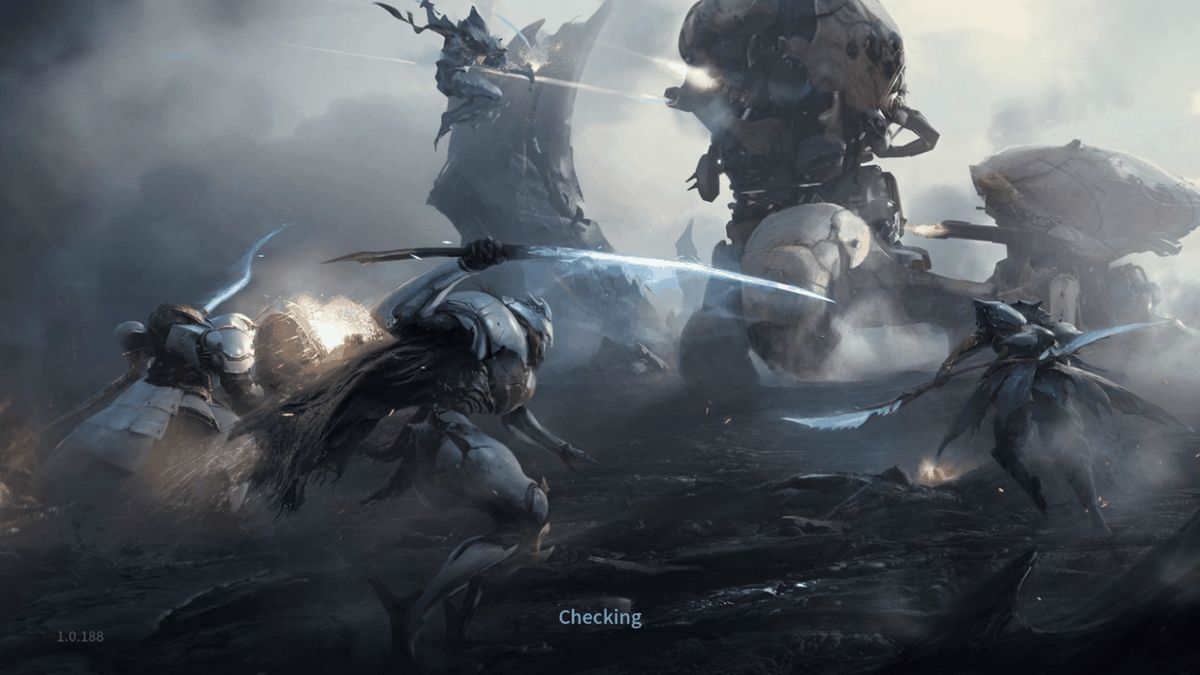Journey is a critically acclaimed video game developed by thatgamecompany and released in 2012 for the PlayStation 3. It has since been re-released on PlayStation 4, Microsoft Windows, and iOS. The game’s unique concept and execution have made it a seminal work in the video game industry, celebrated by both gamers and critics alike.
At its core, Journey is an experience that invites players to explore a vast desert landscape while uncovering secrets about the world around them. The player assumes control of a mysterious figure clothed in robes who travels through various terrains using their abilities to jump, glide and sing. There are no enemies or traditional obstacles; instead, puzzles must be solved to progress further into the world.
The game’s visuals are strikingly beautiful with sweeping sand dunes creating realistic physics-based movement as well as stunning lighting effects created using proprietary technology developed specifically for Journey. Additionally, Austin Wintory’s score serves as an emotional backbone throughout gameplay which enhances storytelling elements with amazing orchestral music.
What makes Journey particularly noteworthy is how it prioritizes communication between players without verbal interactions or competitive goals being present within gameplay. Players seamlessly drop into each other’s games at random intervals, working together cooperatively towards discovering hidden content scattered throughout levels while experiencing moments of empathy along the way.
In this article we will delve further into what makes Journey such an exceptional gaming experience across all platforms and discuss how its influence can still be felt over nine years later since its release date back in March 2012 on PS3 – highlighting why it remains one of the most significant games ever made for modern-day audiences .
- The Artistic Design of “Journey”: A Masterpiece in Minimalism
- Soundscapes and Narrative Relevance in “Journey”
- Multiplayer Without Words: How “Journey” Brings People Together Through Gameplay
- An Emotional Experience: Understanding the Psychology Behind Player Attachment to “Journey”
- Journey’s Impact on the Gaming Industry: Did it Change Game Design Forever?
- From Concept to Completion: A Look at the Development Process of “Journey”
- Connecting with Nature through Video Games – The Ecological Themes of Journey
- Diversity and Inclusion in Gaming – An Analysis of Representation within the World of Journey
The Artistic Design of “Journey”: A Masterpiece in Minimalism

At its core, Journey is an interactive experience that takes players on a visually stunning journey through a vast desert landscape. The game’s artistic elements are essential to the success of the overall experience.
The use of color is one of the most prominent features in Journey’s art design. The muted earth tones evoke feelings of calmness and serenity while also providing contrast against darker moments within the story. Additionally, these colors help create depth within each environment and seamlessly blend together with lighting effects to create breathtaking sunrises and sunsets.

Another key element is the game’s use of sound design. Journey relies heavily on music to drive emotional responses from players during gameplay. Austin Wintory’s score beautifully accompanies every action throughout the game, further enhancing emotions evoked by visual components such as light or shadow.
In essence, “Journey” achieves its sense of minimalism not only through what it does show but rather through what it doesn’t reveal; leaving much up to interpretation which allows for multiple layers meaning for all audiences alike.This approach has helped establish “Journey” as an iconic example for minimalistic video games since its introduction over nine years ago now – still praised today with many awards including BAFTA Games Award (Artistic Achievement) among others – demonstrating how powerful simplicity can be when done correctly within gaming experiences..
Soundscapes and Narrative Relevance in “Journey”
Sound design plays a crucial role in setting the mood and tone, while also providing important cues for navigation and storytelling. The game’s dynamic music system keeps the player engaged throughout their journey, with layers of instrumentation building up as they progress towards their destination.
But beyond just providing atmosphere, the use of sound in Journey serves a narrative purpose as well. The lack of traditional dialogue or exposition means that environmental sounds and musical cues are often the primary means by which players glean information about their surroundings and characters. Whether it’s hearing distant chirps from friendly creatures or ominous growls from lurking enemies, every sound adds to our understanding of this mysterious world.
Furthermore, Journey uses its audio design to connect players with each other in unexpected ways. As they travel together through vast landscapes, players have no direct way of communicating verbally—instead relying on nonverbal gestures like chirping or jumping to signal camaraderie or danger. This creates a sense of community without needing explicit communication—a true testament to the power that sound can hold over our emotions and experiences within games.
Multiplayer Without Words: How “Journey” Brings People Together Through Gameplay
Instead, the game fosters an emotional connection between players through shared experiences and nonverbal cues.
The gameplay mechanics in “Journey” are designed to encourage cooperation and exploration. Players must work together to navigate the game’s sprawling landscapes, solve puzzles, and overcome obstacles. The lack of verbal communication means that players must rely on visual cues and gestures to convey their intentions, which can lead to moments of genuine empathy and understanding.
This innovative approach has been praised for promoting inclusivity in gaming by removing barriers related to language or cultural differences. It also provides a refreshing escape from toxic online communities where harassment is all too common. By prioritizing collaboration over competition, “Journey” creates an environment where players can come together in meaningful ways without ever needing words.”
An Emotional Experience: Understanding the Psychology Behind Player Attachment to “Journey”
Its emotionally evocative gameplay and enchanting world invite players to embark on an unforgettable journey through various landscapes, encountering other players along the way. The psychology behind player attachment to “Journey” can be explained through several factors.
Firstly, the game’s design allows for a sense of anonymity while still promoting social interaction. Players are encouraged to communicate without words or explicit actions, leading to a unique form of nonverbal communication that fosters empathy and connection between strangers. This aspect contributes to feelings of shared emotional experiences that increase attachment towards both the game and fellow players.
Secondly, “Journey” creates an immersive experience by utilizing music and visuals in sync with its gameplay mechanics. Studies have shown that musical stimuli is linked with heightened emotions such as joy or sadness while visual stimuli can evoke memories or nostalgia, enhancing immersion in the gaming experience.
Lastly, research shows that emotional bonding towards media occurs when it provides individuals with psychological needs such as autonomy or relatedness (the feeling of belonging). “Journey” provides these needs through its non-linear gameplay structure which allows for personal exploration at one’s own pace while also providing opportunities for companionship along the way.
In conclusion, player attachment towards “Journey” is not only due to its gorgeous aesthetics but also stems from factors such as fostering empathy between strangers via nonverbal communication and fulfilling psychological needs within individuals. It truly solidifies itself as an exceptional example in terms of creating emotional connections between gamers and their virtual worlds.
Journey’s Impact on the Gaming Industry: Did it Change Game Design Forever?
The game’s unique gameplay mechanics and emotional storytelling captivated players worldwide and changed the way developers approached game design forever.
One of Journey’s most significant impacts on the gaming industry was its emphasis on player experience over traditional gameplay elements such as combat or puzzles. By creating an environment that encouraged exploration, collaboration with other players, and personal interpretation of the story, Journey created a new genre of games focused on delivering immersive experiences rather than challenging gameplay.
Furthermore, Journey proved that games could be art forms capable of eliciting deep emotions from players. This shift towards emotional storytelling influenced later titles such as Firewatch and What Remains Edith Finch to prioritize narrative depth and characters’ development over fast-paced action sequences.
Overall, Journey’s impact on the gaming industry cannot be overstated. Its innovative approach to gameplay mechanics inspired a new generation of video games while its artistic merit legitimized video games as an art form worthy of critical acclaim.
From Concept to Completion: A Look at the Development Process of “Journey”
The initial concept for the game centered around exploring an ancient, mysterious world while creating meaningful connections with other players. To achieve this vision, the team at Thatgamecompany embarked on an iterative process that involved extensive prototyping and playtesting.
One of the key challenges faced by the development team was balancing player autonomy with a structured narrative experience. This required careful consideration of level design, pacing, and player feedback mechanisms to ensure that players were able to engage meaningfully with the story while retaining a sense of agency within the game world.
Technical considerations also played a significant role in shaping the development process. Rendering vast environments filled with detailed textures and lighting effects required sophisticated optimization techniques to ensure smooth performance across all platforms. Additionally, implementing seamless multiplayer elements within such an expansive world presented numerous technical hurdles that had to be carefully navigated.
Ultimately, through close collaboration between designers, artists, programmers, and other specialists, Thatgamecompany successfully brought their vision for “Journey” to life – delivering a unique gaming experience that continues to captivate players today.

Connecting with Nature through Video Games – The Ecological Themes of Journey
The modern era, however, does not seem to provide many opportunities for people to explore the natural world around them. Video games offer a unique opportunity to connect with nature in an interactive and immersive way. One such game is Journey, which presents players with an awe-inspiring virtual environment that encourages exploration and discovery.
The ecological themes of Journey are particularly noteworthy as they showcase the importance of preserving nature’s delicate balance. The game beautifully portrays various biomes while highlighting their fragility and interconnectedness with each other through its captivating visuals and serene soundtrack. Players can witness firsthand how even small actions like interacting with creatures or collecting artifacts can have significant impacts on the environment.
Journey also utilizes gameplay mechanics like environmental puzzles and cooperative play that promote cooperation between players rather than competition, emphasizing teamwork towards conservation efforts instead of exploitation of natural resources. These features make it easier for gamers to develop empathy towards nature by showcasing how their actions affect others in the ecosystem.
In conclusion, Journey provides a valuable experience for those seeking connection with nature through video games by immersing them in stunning environments full of life while promoting meaningful interactions between players and wildlife. Its ecological themes successfully illustrate the beauty and complexity of our planet’s ecosystems whilst simultaneously encouraging respect for its intricate web of interconnectivity that we must strive protect now more than ever before amidst rising concerns about climate change.
Diversity and Inclusion in Gaming – An Analysis of Representation within the World of Journey
One game that stands out as a shining example of diversity and inclusion is Journey.

Journey features a protagonist that has no set gender or race, allowing players to identify with the character on a personal level rather than being forced to conform to traditional stereotypes. The game also includes characters with various skin tones and clothing styles, representing different cultures from around the world.
In addition to visual representation, Journey also promotes inclusivity through gameplay mechanics. The game encourages players to work together regardless of their differences in order to reach a common goal. This message reinforces the importance of unity and acceptance in real life.
Overall, Journey serves as an excellent example of how diversity and inclusion can be integrated into gaming without sacrificing gameplay or storytelling. By showcasing a wide range of diverse characters while promoting teamwork and mutual respect among players, this game sets a new standard for inclusivity within the industry.
In conclusion, Journey is a masterpiece in the gaming world that has captivated players for years. The game’s extreme simplicity and lack of direction have allowed players to explore and interpret the game’s themes on their own terms. Additionally, its unique multiplayer system adds another layer of immersion that is unmatched by any other game.
Journey’s soundtrack and visuals also contribute significantly to its success. The hauntingly beautiful music perfectly complements the emotional journey that players embark upon throughout the game. Similarly, the stunning desert landscapes provide a backdrop like no other, which makes each step towards their destination feel like an accomplishment.
Finally, Journey showcases how video games can be art forms in themselves—able to convey complex human emotions through interactive experiences with profound impact on their audience.
Overall, Journey is not only one of the most important titles in recent gaming history but a testament to what video games can achieve when combined with innovative gameplay mechanics and artistic expression. It will remain as a timeless classic for many years to come—a true masterpiece in every sense of the word.
Read More:- Explore Endless Possibilities with Game Portal 2: The Ultimate Gaming Experience!.
- Embark on an Emotional Journey to the Moon with this Captivating Game – Play Now!.
- Unleash Chaos with Disgaea 5 Complete: The Ultimate Strategy RPG | Explore Endless Possibilities Now!.
- Discover the Epic Adventure of Arc the Lad: Twilight of the Spirits Game – Get Ready to Embark on a Thrilling Journey! (70 characters including spaces).
- Embark on a Musical Adventure with Fuga: Melodies of Steel Game – Experience the Ultimate Journey | 70 characters.
- Discover the Endless Possibilities of The Binding of Isaac: Afterbirth Game!.
- Discover Endless Possibilities: Super Mario Maker 2 Lets You Create Your Own Adventure!.